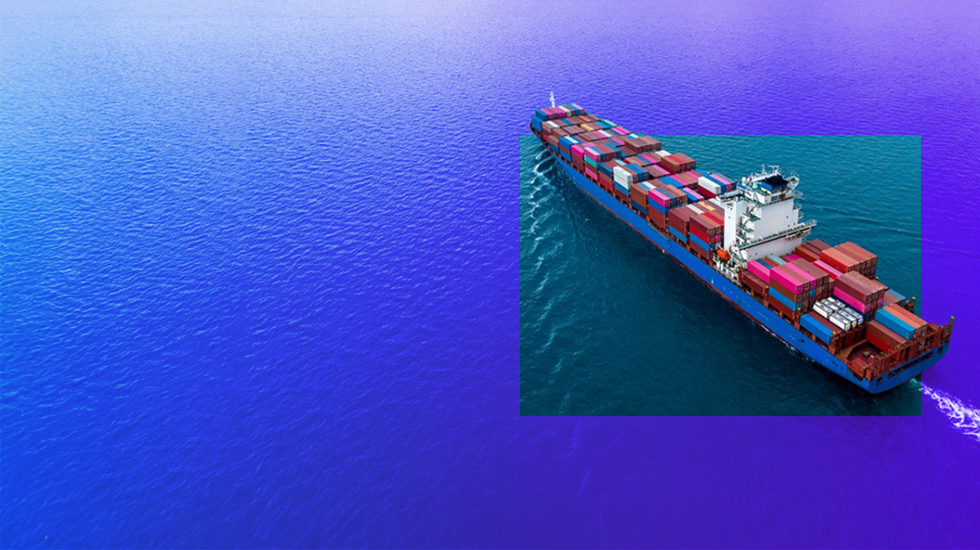
Navigating increasingly complex supply chains: Five trends shaping the economic landscape
September 2025
As global trade continues to evolve under the weight of policy uncertainty, geopolitical tensions and technological disruptions, supply chains are once again in the spotlight. These forces are structurally reshaping supply chain strategy, with implications for inflation, investment and productivity. Supply chains are increasingly prone to disruption. This biannual report outlines five trends reshaping the outlook and what those trends mean for businesses trying to navigate uncertainty.
1. Uneven rollout of tariffs disrupts supply chains
The surge in trade policy uncertainty and igniting trade tensions have prompted firms to hedge risk in their supply chains. Firms are considering reorganizing supply chains to mitigate exposure, turning toward strategic sourcing to reroute goods. “Nearshoring” and “friend-shoring” are popular buzzwords, but the gap between the reality and ability to change is large.
Since 2017, firms have increasingly used connector countries to avoid tariffs. The strategy has lengthened supply chains and increased their vulnerability.
Everything from bad weather to geopolitical tensions can affect supply chains, more so now than pre-pandemic. That makes supply chains a target for retaliatory measures from countries strategically reacting to new tariffs. As a result, firms are considering agility over lowest-cost destinations when making sourcing decisions, a major departure.
On top of supply chain vulnerabilities, tariffs have pushed US importers to stockpile inventories. We saw a 42% surge in shipping rates between Shanghai and the US from December 2024 to January 2025, with intermittent spikes since then as importers use a stop-and-go approach with ongoing trade negotiations.
As tariffs rise, tariff fraud tends to rise, prompting stepped-up enforcement. US Customs and Border Protection collected $163.2 million in penalties in the 2025 fiscal year through June 30, up from $118 million for 2024. The goal is to deter transshipments and the utilization of third-countries, potentially increasing compliance costs. The result is a landscape that is growing more unpredictable.
2. Rules of origin are tightening
August’s new round of tariffs introduced a major shift in how the US will treat country of origin: a 40% tariff targeting “transshipments” that are avoiding higher tariff countries. The Commerce Secretary has said that products with “significant content, like 30%” from a higher-tariffed country would be considered a transshipment.
Traditionally, transshipment refers to goods that are only briefly processed or rerouted through a third country to avoid higher tariffs, often skirting legal rules of origin. So long as the product had an arbitrarily “substantial” transformation in-country, it has not been considered a transshipment.
We could be seeing a potential overhaul in customs enforcement, driven by national security concerns and aimed at curbing evasive import practices. The upcoming USMCA review in 2026 is likely to accelerate concern over transshipment practices. Sectors such as automotives and electronics are particularly exposed.
This challenges the viability of utilizing substantial transformation in a connector country and ups the ante for supply chain data and visibility. It is already difficult to trace inputs. The auto industry is the most exposed and could ramp up production at existing facilities in the US, but potentially at the expense of their overall productivity and costs.
3. Advances in artificial intelligence (AI) up the ante for cybersecurity
AI is transforming supply chain management in more ways than one. AI is not just being utilized for analytics and logistics, but it also comes with risk. Cybersecurity has become one of the top risks for executives in supply chains. The FBI’s Internet Crime Complaint Center (IC3) reported over 859,000 cybercrime complaints in 2024 with losses exceeding $16.6 billion; that’s up from $3.5 billion in 2019. Ransomware remains the biggest threat to critical infrastructure.
Technological advancements are accelerating fraud and crime, adding another vector by which supply chains can be disrupted. The biggest risk is an erosion of trust in supply networks and potentially the added risk of contagion, which could raise transaction costs and disrupt trade flows further.
4. Disruptive weather events continue to rise
Weather-related disruptions are becoming more frequent and costly. Billion-dollar disasters (after adjusting for inflation) occur every two to three weeks today on average, compared to every four months in the 1980s. In 2024 alone, the US experienced 27 disasters in which losses exceeded $1 billion, the second highest on record and second only to 2023. Catastrophic hurricanes, wildfires and storms hit logistics capacity hard; for example, rerouting in the midst of an Atlantic hurricane can take weeks for maritime shippers. Trucking and port operations on land can also be slowed.
Those events have the potential to be even more disruptive at a time when importers are scrambling for new strategies. It reduces the predictability of supply on top of increasing insurance premiums and overall costs. The Environmental Protection Agency suggests that water infrastructure and energy grids are among the most susceptible to weather-related disasters; these are critical for the operations of logistics and supply chains.
5. Uncertainty throws a wrench into supply chain forecasting
Supply chains are, for the purpose of economists, the wedge between supply and demand. The larger the gap in cost terms, the larger the tax on the economy. That’s what we experienced post-pandemic; the wedge between available supply and surging demand grew to enormous levels. Supply chains are experiencing similar challenges now. Policy shifts, waffling consumer sentiment and geopolitical instability are making demand forecasting increasingly difficult.
Economic policy uncertainty has climbed significantly this year; by some metrics, US policy uncertainty has eclipsed even the uncertainty experienced during the pandemic. Most categories are high and remain elevated, but trade policy uncertainty occupies a league of its own. As of August, it was 21 times larger than its historical average going back to 1985. Uncertainty causes firms to hesitate or even pause investments.
Stocking up earlier in the year before tariffs led to bloated inventories; now the question is whether or not they can be sold. Firms face a delicate balance: overbuying inventories risks a glut if consumer demand falters, while underbuying could lead to shortages and increased costs. This dynamic is particularly acute in sectors with long lead times (such as heavy machinery, high-tech goods and aerospace/defense) and perishable goods.
Supply chains remain a key risk factor for forecasting the US and global economy.

Meagan Schoenberger
KPMG Senior Economist
Bottom Line:
Is this period of uncertainty cyclical, or could we be entering a period of sustained higher levels of uncertainty? Persistent global disruptions from geopolitical tensions, weather-related shocks and the rapid pace of technological change (not to mention shifts in the global trade order), combined with an erosion in institutional trust could lead to a less predictable environment for supply chains.
Supply chains are longer, more complex and more exposed to disruption than ever before. Tariffs are forcing firms to rethink where and with whom they do business. Uncertainty over the future of tariffs is delaying those decisions. Worries about “cascading protectionism” or the phenomenon where the most exposed firms lobby for reduced tariffs, continue to abound as trade tensions can escalate rapidly. Supply chains remain a key risk factor for forecasting the US and global economy as turbulence amidst tariffs, geopolitics and reorganization continue.
Subscribe to insights from KPMG Economics
KPMG Economics distributes a wide selection of insight and analysis to help businesses make informed decisions.
Explore more

Navigating increasingly complex supply chains: Five trends shaping the economic landscape
Inflation risks rise.

KPMG Economics
A source for unbiased economic intelligence to help improve strategic decision-making.

Policy in Motion: Insights for navigating with confidence
Your resource for the latest on trade, tariff and regulatory policy changes.
Meet our team
